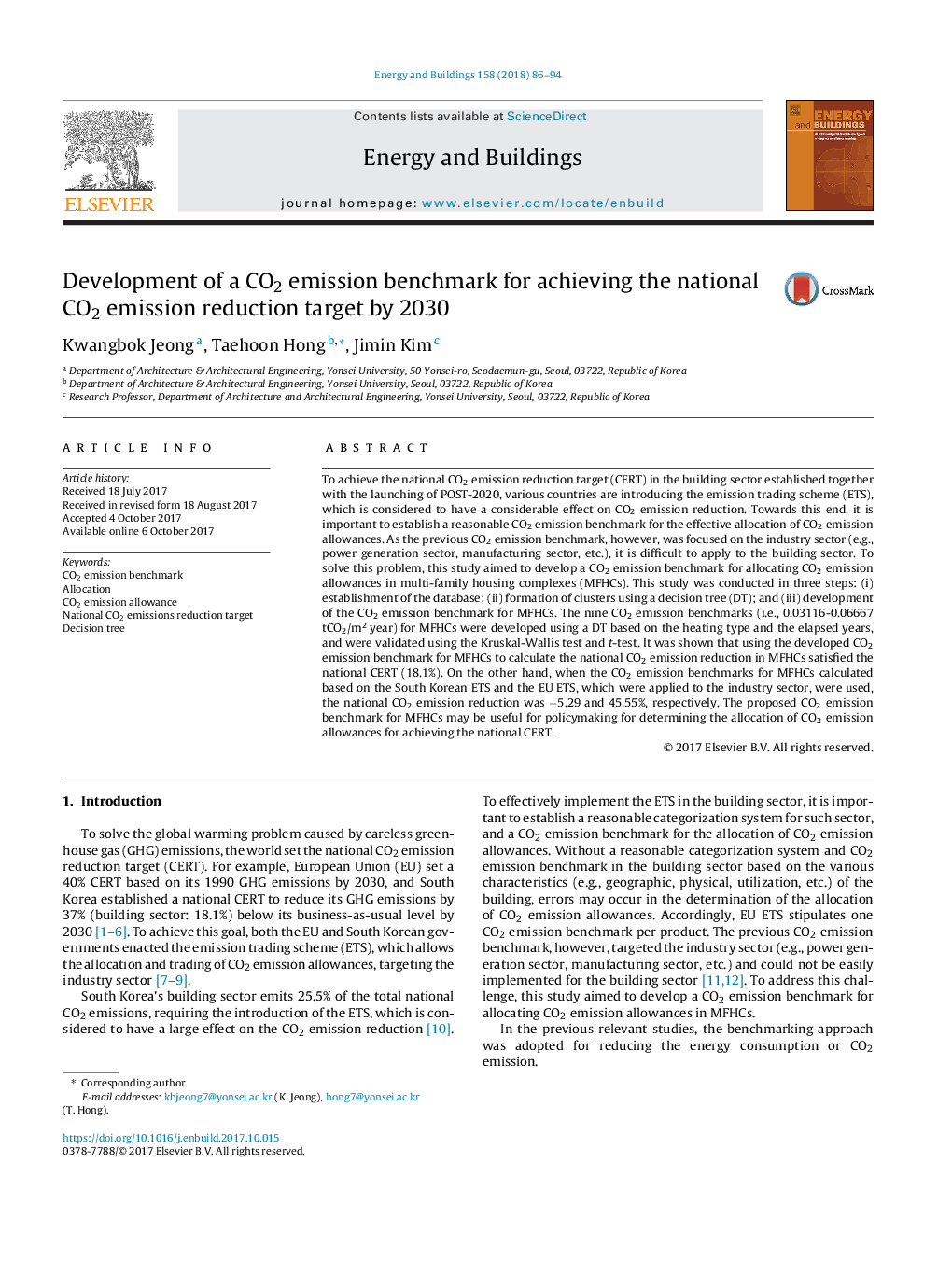| Article ID | Journal | Published Year | Pages | File Type |
|---|---|---|---|---|
| 4914089 | Energy and Buildings | 2018 | 9 Pages |
â¢A reasonable classification process was proposed using the decision tree method.â¢Benchmark was developed to meet the national CO2 emissions reduction target by 2030.â¢The data mining and statistical methodologies were used in this study.â¢The CO2 emission allowance by cluster was estimated based on CO2 emission benchmark.â¢It can help policy-makers in determining the allocation of CO2 emission allowance.
To achieve the national CO2 emission reduction target (CERT) in the building sector established together with the launching of POST-2020, various countries are introducing the emission trading scheme (ETS), which is considered to have a considerable effect on CO2 emission reduction. Towards this end, it is important to establish a reasonable CO2 emission benchmark for the effective allocation of CO2 emission allowances. As the previous CO2 emission benchmark, however, was focused on the industry sector (e.g., power generation sector, manufacturing sector, etc.), it is difficult to apply to the building sector. To solve this problem, this study aimed to develop a CO2 emission benchmark for allocating CO2 emission allowances in multi-family housing complexes (MFHCs). This study was conducted in three steps: (i) establishment of the database; (ii) formation of clusters using a decision tree (DT); and (iii) development of the CO2 emission benchmark for MFHCs. The nine CO2 emission benchmarks (i.e., 0.03116-0.06667 tCO2/m2Â year) for MFHCs were developed using a DT based on the heating type and the elapsed years, and were validated using the Kruskal-Wallis test and t-test. It was shown that using the developed CO2 emission benchmark for MFHCs to calculate the national CO2 emission reduction in MFHCs satisfied the national CERT (18.1%). On the other hand, when the CO2 emission benchmarks for MFHCs calculated based on the South Korean ETS and the EU ETS, which were applied to the industry sector, were used, the national CO2 emission reduction was â5.29 and 45.55%, respectively. The proposed CO2 emission benchmark for MFHCs may be useful for policymaking for determining the allocation of CO2 emission allowances for achieving the national CERT.
